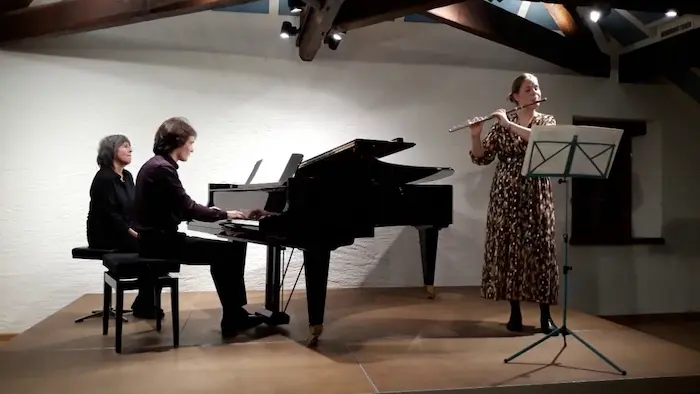The Fantasia, Toccata, and Fugue in D Minor is one of the most iconic and celebrated pieces in classical music. Composed by Johann Sebastian Bach, it has captivated audiences for centuries with its dramatic and intricate structure. This article delves into the history, composition, and impact of this magnificent work, exploring its nuances and enduring legacy.
I. Historical Context
1. Bach’s Life and Times
Johann Sebastian Bach, born in 1685 in Eisenach, Germany, was a prolific composer and musician of the Baroque era. His works span a wide range of musical forms, from cantatas and concertos to organ and keyboard music. The Fantasia, Toccata, and Fugue in D Minor are among his most famous organ compositions, showcasing his mastery of counterpoint and thematic development.
2. Baroque Music
The Baroque period, roughly spanning from 1600 to 1750, was characterized by its ornate and expressive musical style. Composers like Bach, Handel, and Vivaldi contributed significantly to the development of Western classical music during this era. The use of counterpoint, intricate melodies, and dramatic contrasts are hallmarks of Baroque music, all of which are evident in Bach’s D Minor composition.
3. The Organ in Baroque Music
The organ was a central instrument in Baroque music, particularly in religious settings. It allowed composers to experiment with complex polyphony and rich textures. Bach was an accomplished organist, and his works for the instrument remain some of the most challenging and revered in the repertoire.
II. Composition Analysis
1. Structure and Form
The Fantasia, Toccata, and Fugue in D Minor are typically performed as a single, continuous piece, but they can be dissected into three distinct sections: the Fantasia, the Toccata, and the Fugue. Each section has its unique characteristics and challenges.
a. The Fantasia
The Fantasia serves as an introduction, characterized by its free-flowing, improvisatory nature. It sets the tone for the piece, establishing a dramatic and somber mood. The use of bold harmonic progressions and striking chord changes makes it an evocative opening.
b. The Toccata
The Toccata follows the Fantasia and is marked by its virtuosic passages and rapid, intricate finger work. The term “toccata” comes from the Italian word “toccare,” meaning “to touch,” reflecting the emphasis on the performer’s technical prowess. Bach’s Toccata in D Minor is particularly famous for its powerful, cascading sequences and rhythmic drive.
c. The Fugue
The Fugue is the final section and is a masterpiece of contrapuntal writing. It features a single thematic idea, or “subject,” which is introduced and then developed through a series of imitative entries across different voices. The complexity and ingenuity of Bach’s fugue writing are unparalleled, and the D Minor Fugue is a prime example of his skill.
2. Thematic Development
Bach’s use of thematic development is a key aspect of the Fantasia, Toccata, and Fugue in D Minor. Each section introduces and elaborates on distinct musical ideas, creating a cohesive and compelling narrative. The thematic material is meticulously crafted, with each motif and phrase contributing to the overall structure.
3. Harmonic Language
The harmonic language of the D Minor composition is rich and varied. Bach employs a wide range of harmonic techniques, from bold modulations to intricate voice leading. The tension and resolution of harmonies create a dynamic and engaging listening experience.
III. Performance Practice
1. Interpretative Challenges
Performing the Fantasia, Toccata, and Fugue in D Minor poses significant interpretative challenges. The performer must navigate the technical demands of the piece while conveying its emotional depth and complexity. The balance between precision and expressiveness is crucial.
2. Organ Registration
Organ registration refers to the selection of stops on the organ, which control the instrument’s timbre and volume. Choosing the appropriate registration for Bach’s D Minor composition is essential to achieving the desired sound. Different organists may opt for varying registrations, resulting in unique interpretations.
3. Historical Performance Practice
Understanding historical performance practice is vital for interpreting Baroque music. This includes knowledge of period instruments, ornamentation, and articulation. Modern performers often strive to recreate the sound and style of Bach’s time, although contemporary interpretations can also bring new insights.
IV. Impact and Legacy
1. Influence on Later Composers
Bach’s Fantasia, Toccata, and Fugue in D Minor have had a profound influence on subsequent generations of composers. The complexity and innovation of Bach’s writing have inspired countless musicians and composers, from the Classical period to the present day.
2. Popularity and Cultural Significance
The piece remains immensely popular and is frequently performed and recorded. Its dramatic and recognizable themes have made it a staple in both concert halls and popular culture. The Toccata in particular has been used in various films, television shows, and other media, cementing its place in the public imagination.
3. Modern Interpretations
Modern interpretations of the Fantasia, Toccata, and Fugue in D Minor vary widely, reflecting the diverse approaches to performing Bach’s music. Some performers adhere closely to historical practices, while others bring contemporary sensibilities to the piece. This diversity of interpretations ensures that Bach’s work continues to resonate with audiences today.
See Also: Exploring Semi-Classical Music: A Fusion of Tradition and Innovation
V. Conclusion
The Fantasia, Toccata, and Fugue in D Minor by Johann Sebastian Bach is a monumental work that exemplifies the brilliance of Baroque music. Its intricate structure, thematic development, and technical demands make it a masterpiece of the organ repertoire. The enduring popularity and influence of this composition attest to Bach’s genius and the timeless appeal of his music. Whether experienced in a concert hall or through recordings, the Fantasia, Toccata, and Fugue in D Minor continues to captivate and inspire audiences around the world.

